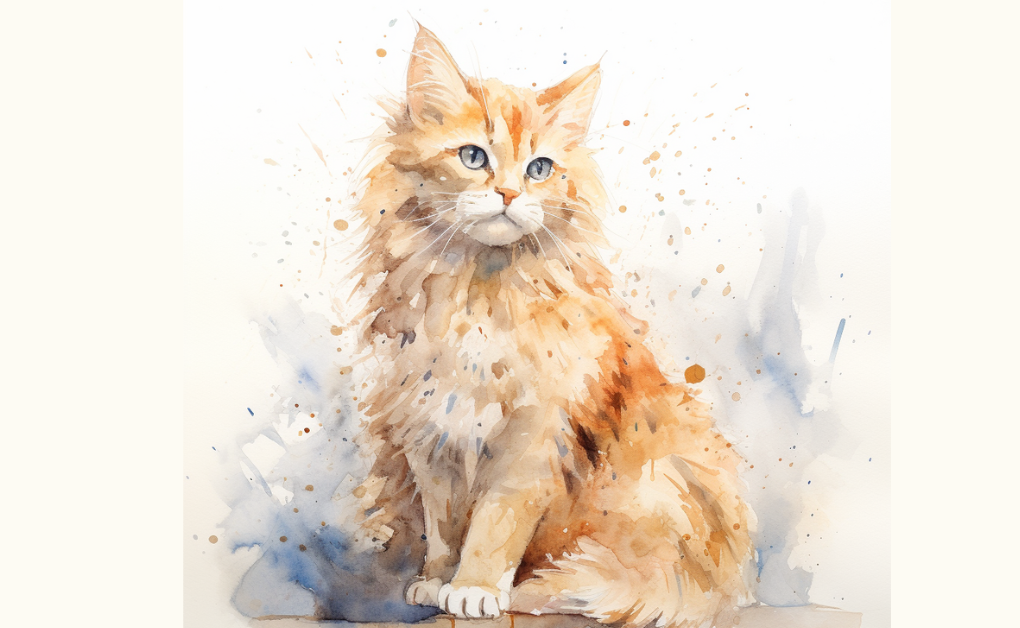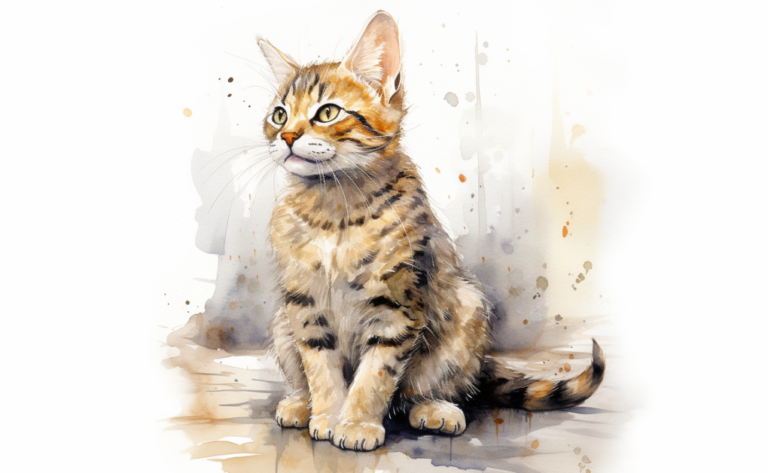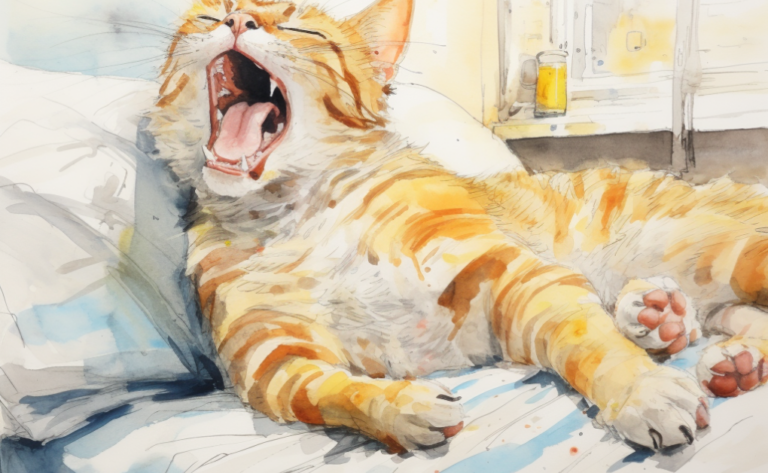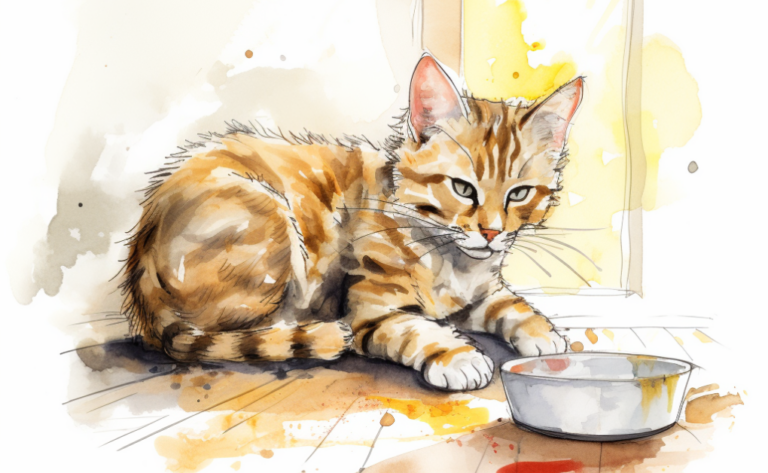What is Lymphoma in Cats?
What is it?
How is it Treated?
Breed Predispositions
Certain breeds, such as Siamese and domestic shorthair cats, may have a slightly increased risk of developing lymphoma.
Introduction
When Sarah first brought home her rescue cat, Jasper, she was committed to giving him the best life possible. Regular vet visits, playtime, and a healthy diet were all part of the plan. However, a few months into their journey together, Sarah noticed that Jasper seemed to be losing weight and appeared lethargic. Concerned, she made an appointment with their veterinarian. After a series of tests, Sarah was given the heartbreaking news: Jasper had been diagnosed with lymphoma.
Lymphoma in cats, also called lymphosarcoma, is a form of cancer that impacts the lymphocytes, a specific type of white blood cell integral to the immune system’s function. This cancer arises due to certain internal processes that trigger uncontrolled growth and spread of abnormal lymphocytes. Lymphoma can infiltrate various organs and tissues, including the lymph nodes, gastrointestinal tract, liver, and spleen, as well as other regions of the body. It holds the unfortunate distinction of being the most prevalent form of cancer in cats.
Gaining insight into the emergence of lymphoma is vital in identifying the condition and promptly seeking the necessary veterinary care. It’s important to remember that lymphoma is cancer that can sometimes lead to severe conditions like pleural effusion. However, with proper treatment, complete remission is possible in some cases.
Types of Lymphoma in Cats
Feline lymphoma, one of the most prevalent forms of cancer in cats, refers to a broad array of cancers originating in the lymphocytes, a specific kind of white blood cell essential to the immune response. There are several classifications of feline lymphoma, each named according to where the cancer initially develops in the cat’s body.
Multicentric Lymphoma
Multicentric lymphoma is a category that impacts the lymph nodes. In comparison to dogs, this type is relatively rare in cats. Its presence might result in enlarged peripheral lymph nodes, detectable as firm, round swellings beneath the skin in various body areas. Other signs like lethargy, fever, and reduced appetite could also be present. The progression of multicentric lymphoma and its response to treatment largely depends on the cat’s overall health and cancer’s aggressiveness.
Alimentary (Gastrointestinal) Lymphoma
Alimentary lymphoma, or gastrointestinal lymphoma, is the most frequently diagnosed form of feline lymphoma. It primarily affects the gastrointestinal tract, particularly the stomach and intestines, but can also extend to the liver and mesenteric lymph nodes. Symptoms often resemble other digestive disorders, such as vomiting, diarrhea, significant weight loss, reduced appetite, and lethargy. Left untreated, alimentary lymphoma could lead to complications like protein-losing enteropathy, malabsorption, and potentially life-threatening conditions.
Mediastinal Lymphoma
Mediastinal lymphoma is characterized by a mass or multiple masses within the mediastinum, the space between the lungs containing the heart, large blood vessels, trachea, and esophagus. It can cause significant respiratory distress as the mass grows or fluid accumulates around the lungs, a condition known as pleural effusion. Symptoms may include difficulty breathing, rapid breathing, loss of appetite, and lethargy. This type of lymphoma is often linked with Feline Leukemia Virus (FeLV).
Renal (Kidney) Lymphoma
Renal lymphoma is a variant that targets the kidneys, potentially causing kidney dysfunction symptoms like increased thirst, frequent urination, weight loss, reduced appetite, and lethargy. Enlarged kidneys are a common physical finding in these cases. Like mediastinal lymphoma, FeLV has been associated with this type of lymphoma, though it’s less frequent in recent years due to successful FeLV vaccination protocols.
Extranodal Lymphoma
Extranodal lymphoma is named for its ability to occur in any organ or tissue outside the lymph nodes or lymphatic tissue. Common sites include the eyes, the nasal cavity, the central nervous system, the skin, and the heart. The symptoms and treatment strategies of extranodal lymphoma depend on the affected organ.
Treatment for these types of lymphoma typically involves chemotherapy, with certain types responding better than others. The cat’s overall health status and the specific form of lymphoma significantly influence prognosis. Cats diagnosed at an early stage and promptly treated often have a better prognosis than those diagnosed at advanced stages. Regular vet check-ups for early detection and management of such diseases are key.
Causes of Lymphoma in Cats
Lymphoma in cats is a multifactorial disease, meaning that a combination of genetic and environmental factors causes it. There isn’t a single cause for lymphoma, but several risk factors are associated with its development.
Here are some of the main known factors associated with lymphoma in cats:
1. Feline Leukemia Virus (FeLV) and Feline Immunodeficiency Virus (FIV)
In the past, the Feline Leukemia Virus (FeLV) was one of the leading causes of lymphoma in cats. With more widespread testing and vaccination against FeLV, the number of cases of lymphoma associated with this virus has decreased significantly. However, cats infected with FeLV or Feline Immunodeficiency Virus (FIV) are at higher risk of developing lymphoma.
2. Genetic Factors
Certain cat breeds might have a predisposition to lymphoma, suggesting a genetic component. However, the specifics of this need to be better understood, and more research is needed to clarify the relationship between genetics and lymphoma in cats.

3. Environmental Factors
Exposure to tobacco smoke has been associated with an increased risk of lymphoma in cats, particularly alimentary (gastrointestinal) lymphoma. Other environmental carcinogens (cancer-causing agents) may also play a role.
4. Chronic Inflammation
Evidence suggests a link between chronic inflammation, particularly inflammatory bowel disease (IBD), and the development of gastrointestinal lymphoma. The theory is that constant inflammation could lead to changes (mutations) in the cells lining the gut, which might develop into cancer over time.
However, it’s important to note that while these factors can increase a cat’s risk of developing lymphoma, not all cats exposed to these risk factors will get lymphoma. Additionally, some cats with lymphoma may not have any known risk factors. Lymphoma is a complex disease, and researchers are still working to understand what causes it fully.
Symptoms of Lymphoma in Cats
Lymphoma can impact multiple areas within a cat’s body, resulting in various symptoms based on the disease’s location and severity. Here are some common indications you may observe in an affected cat:
- Loss of Appetite: A clear sign of cat lymphoma is a reduced interest in food, often leading to weight loss.
- Weight Loss: The decreased appetite or the body’s reaction to cancer may result in unexplained weight loss, a prevalent symptom in many diseases, including lymphoma.
- Lethargy: Cats affected by lymphoma might seem more tired than usual, showing less enthusiasm for playtime or regular activities.
- Vomiting and Diarrhea: If your cat is suffering from GI lymphoma affecting the alimentary (gastrointestinal) tract, you may notice symptoms such as vomiting, diarrhea, or changes in stool consistency.
- Enlarged Lymph Nodes: Certain forms of lymphoma may cause swollen, firm lymph nodes that can be detected under the skin.
- Breathing Difficulty: If lymphoma invades the chest area or mediastinum, it may result in respiratory issues such as difficulty in breathing, coughing, or rapid breathing.
- Increased Thirst and Urination: If renal (kidney) lymphoma is present, your cat might show signs of kidney dysfunction, including increased drinking and urination.
- Abdominal Swelling: The lymphoma involving the liver or spleen can cause an enlarged abdomen.
- Changes in Behavior or Mobility: Lymphoma affecting the central nervous system could lead to behavioral changes, seizures, or issues with coordination or mobility.
- Visible Masses or Lumps: Cutaneous (skin) lymphoma can manifest as noticeable lumps, bumps, or skin discoloration.
Should you observe these signs in your cat, it is crucial to seek veterinary attention promptly. It’s important to note that many of these symptoms are not exclusive to lymphoma and can indicate other diseases. Therefore, a comprehensive examination and diagnostic tests are necessary to ascertain the cause.
Diagnosis of Feline Lymphoma
Diagnosing feline intestinal lymphoma typically involves analyzing the cat’s medical history, conducting a physical examination, and performing several diagnostic tests. Here are the steps a veterinarian might follow:
Physical Examination
The initial step usually includes a comprehensive physical examination by a vet. They will palpate (examine by touch) the cat’s body to identify any unusual lumps, bumps, or swellings that might suggest enlarged lymph nodes or masses. They’ll also look for other illness indicators, such as weight loss, changes in body condition, or signs of discomfort.

Blood Tests
Blood tests are often conducted to gauge the cat’s overall health and look for irregularities that could indicate lymphoma. This might consist of a complete blood count (CBC), a biochemistry profile, and tests for feline leukemia virus (FeLV) and feline immunodeficiency virus (FIV), both linked with an increased risk of lymphoma.
Imaging Studies
Imaging studies like X-rays or ultrasounds may be employed to search for masses, enlarged lymph nodes, or other changes within the internal organs that might imply lymphoma. An ultrasound can also guide the vet in performing fine-needle aspiration or biopsies, often needed for a confirmed diagnosis.
Cytology and Histopathology
Cytology involves the microscopic examination of cells and can sometimes confirm a lymphoma diagnosis. Typically, this is performed on samples obtained via fine-needle aspiration, using a small needle to extract cells from a mass or enlarged lymph node. However, cytology can sometimes be inconclusive for lymphoma.
A biopsy (extraction of a larger tissue piece) is often needed for a definitive diagnosis. This tissue sample is sent to a lab where a veterinary pathologist performs a microscopic examination to detect the presence of cancer cells, a procedure referred to as histopathology.
Immunohistochemistry or PARR
Advanced techniques like immunohistochemistry or PCR for Antigen Receptor Rearrangement (PARR) can be used if the diagnosis remains uncertain. These tests help identify the type of lymphocytes involved (B-cells or T-cells), a valuable step in the diagnosis and treatment planning process for cats suspected of having lymphoma.
Diagnosing large or small cell lymphoma can be challenging, as other conditions may present similar symptoms and test results. Typically, it involves a combination of multiple tests and a process of elimination in the realm of clinical pathology to arrive at a definitive diagnosis of a cat diagnosed with lymphoma.
Treatment for Lymphoma in Felines
Cats diagnosed with lymphoma often have an extended life expectancy, especially when detected early. Chemotherapy treatments can potentially eliminate both healthy and diseased cells, including tumor-causing ones. As a result, with early detection, many cats can live up to a decade longer than the average lifespan for their breed. Here are the treatment options typically suggested for cats with lymphoma:
Chemotherapy Treatment
Chemotherapy is the principal treatment method for lymphomas, including large-cell lymphoma. The specifics of chemotherapy can vary based on the lymphoma type. Some patients receive drug infusions directly into their bloodstream, while others are administered intravenous medication doses. Certain cats may also undergo radiation therapy. Post-chemotherapy, additional treatments like immunotherapy or stem cell transplantation may follow. Approximately 50 to 70% of cats with lymphoma respond to treatment and go into remission, which indicates that cats tolerate chemotherapy well.
Radiation Therapy
Radiation therapy is another method occasionally employed to treat lymphomas. This process involves inserting radioactive material into the cat’s body. It can be used independently but is often combined with chemotherapy to maximize the effect.
Palliative Care
In situations where there is no prospect of a cure, palliative care is usually recommended. Cats with lymphoma may experience various symptoms, including fatigue, pain, nausea, loss of appetite, difficulty breathing, and occasionally, bleeding. During this treatment, they may require hospitalization.
Multidrug Protocols
In the initial treatment stages, multidrug protocols are commonly used. These protocols combine different chemotherapy drugs to enhance their effectiveness against tumor cells. However, if the disease progresses, the regimen may include newer medications.
Overall, the survival time for a cat with lymphoma can vary significantly, depending on factors like the feline leukemia virus status, the lymphoma type, and how well they respond to treatment. This underlines the importance of early detection and promptly initiating lymphoma treatment in cats.
Prevention for Cat Lymphoma
While it’s not always possible to prevent lymphoma, as the disease often arises from factors beyond an owner’s control, like genetics or random cellular changes, you can take certain measures to mitigate your cat’s risk of developing this disease.
- Vaccination and Consistent Testing: By vaccinating your cat against Feline Leukemia Virus (FeLV) and maintaining regular testing for FeLV and Feline Immunodeficiency Virus (FIV), you can help guard against these viruses known to raise lymphoma risk.
- Indoor Lifestyle: Ensuring your cat stays indoors can curtail exposure to FeLV, FIV, and other outdoor pathogens. Indoor cats also generally have lower incidences of injuries and exposure to harmful elements.
- Steer Clear of Tobacco Smoke: Exposure to secondhand smoke has been linked with a heightened risk of lymphoma in cats. If you smoke, avoid doing so around your cat, or consider giving it up. Aim to limit your cat’s contact with other environmental carcinogens as well.
- Offer a Nutritious Diet: A balanced, nutrient-rich diet can bolster your cat’s overall health and immune function. While no specific diet can avert cancer, proper nutrition can keep your cat’s body functioning at its best.
- Frequent Vet Check-ups: Regular check-ups with the vet can facilitate early detection of lymphoma or other health concerns when treatment is likely more effective. Your vet can offer tailored advice based on your cat’s needs and risk factors, ensuring critical care for your pet.
- Control Chronic Inflammation: If your cat suffers from a condition leading to chronic inflammation, like inflammatory bowel disease, work closely with your vet to manage the condition effectively. Unregulated chronic inflammation could elevate the risk of lymphoma.
It’s important to remember that while these strategies can reduce the risk, they cannot eliminate the possibility of lymphoma. This cancer remains one of the most prevalent in cats. Cats that achieve early detection and treatment have a better prognosis, regardless of the type of lymphoma diagnosed. Always consult your vet if you observe changes in your senior cat’s health or behavior.
Frequently Asked Questions
Disclaimer: The information provided on this veterinary website is intended for general educational purposes only and should not be considered as a substitute for professional veterinary advice, diagnosis, or treatment. Always consult a licensed veterinarian for any concerns or questions regarding the health and well-being of your pet. This website does not claim to cover every possible situation or provide exhaustive knowledge on the subjects presented. The owners and contributors of this website are not responsible for any harm or loss that may result from the use or misuse of the information provided herein.







